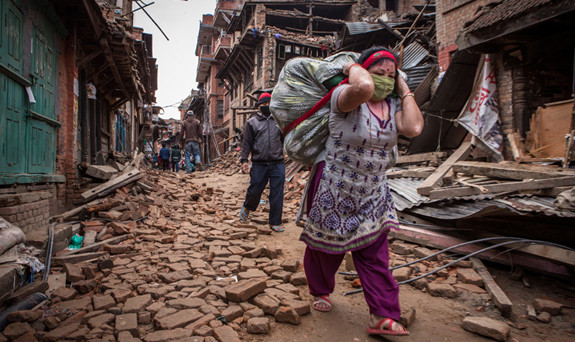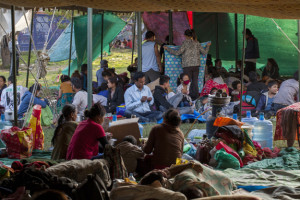
Since the earthquake in Nepal on April 25th, over 5000 have lost their lives. Nearly two million children have been affected by the worst earthquake the nation has seen in 80 years, and its aftermath in the Kathmandu Valley and elsewhere in central Nepal.
Based on the country’s population trends, in the six days since the earthquake, close to 10,000 women have given birth in uncertain circumstances, potentially distanced from loved ones and critical support networks. National trends before the earthquake would have seen 45% of these women delivering at home, with just over half of pregnant women trying to make their way to a health facility.
Pregnant women and babies receiving care in clinics and hospitals at the time of the earthquake are contending with limited beds, overcrowding and overworked staff while health workers care for survivors. It appears that numerous health facilities are without electricity; many have been damaged.
Women delivering at home may be in unsafe, unhygienic conditions with little opportunity to reach extra care if complications occur. Support for mother-led interventions like skin-to-skin care for babies born too small and too soon, safe hygiene practices, and early and exclusive breastfeeding are needed now more than ever.
Nepal is making progress towards reaching every woman and baby with essential care for survival and health. Strong partnerships between government and development partners have ensured effectively-coordinated efforts in maternal and newborn health.
Openness to innovations, especially those that improve availability and quality of essential services and engage communities, such as establishing local birthing centres, strengthening women’s groups, promotion and use of chlorhexidine for umbilical cord care, and providing treatment for newborn sepsis at the lowest level facilities, means the country is poised for rapid reductions in newborn mortality to match those recently seen in maternal and child deaths.

A major humanitarian emergency like this earthquake will set back these efforts. Primary healthcare services don’t require the same level of infrastructure likely to be damaged in the earthquake but they do rely on people, many of whom who will be trying to locate family members and ensure their own safety.
These early days are critical to find survivors and ensure protection for those most at risk, including pregnant women and their newborns.
In the coming weeks and months they will need additional support to rebuild clinics, hospitals, roads, and other infrastructure. Amongst the many that have suffered as a direct result of the earthquake, it is important to remember that the repercussions will continue to affect thousands more. In order to help reconstruct a nation after this emergency, we must remember to care for pregnant mothers and their newborns.
The global community needs to support Nepal
If you would like to get involved in relief efforts, we encourage you to support organizations already actively working to help affected areas.
For suggestions, please visit this web site to learn more about what they do and how you can help.
Comments